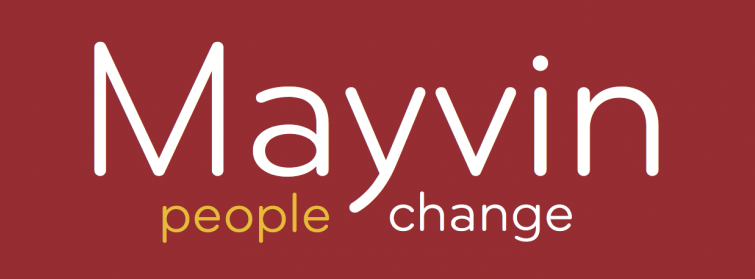A Mayvin community event investigates what it means to put customers at the heart of OD interventions, the role of OD practitioners and action research techniques.
We all know what it means to be a customer: every day we purchase goods or services and expect a positive experience, one that many companies and brands focus on almost obsessively. Customer-centricity has been the buzzword in company culture for a while now and not just in more traditional consumer-facing businesses but across industries, sectors and geographies.
You might be reading this thinking: "I know what it is to put the customer first in my work". But, how does that translate into outcomes and what was does it truly mean to be customer first?
Many OD practitioners already feel they are putting the customer first and are naturally the best placed to take customer-centricity a step further, even though customer-centricity is still largely unexplored as a codified concept. What if we could make organisation development a customer-centric process? We were intrigued by this proposition when we first discussed it with the OD team at John Lewis and so co-created an event to gather ideas, challenge our preconceptions, connect with our community and create a new ‘customer-centric OD’ movement.
Our thought partners
Together with Gemma Hook, Organisational Development Manager at John Lewis, Dawn Powell, now Organisational Development and Design Manager at Tesco and with the help of OD consultant Diane Moody, we facilitated a passionate discussion with other fellow OD practitioners to help us formulate the core principles of customer-centric OD.
John Lewis, a customer-centric organisation, hosted the event with Mayvin. To feed into the event, Gemma Hook and Dawn Powell interviewed numerous customer-facing Partners and brought the insights from those meetings to the event.
Customer-centric OD: A definition
Customer centricity is the ability to add value to the customer. The business needs to constantly ask at all levels: What’s our customer value proposition?
Customer-centric OD is about having a customer-first mindset throughout all organisational design and development work. It is about focusing our clients’ minds on the impact our decisions have on customers and helping them navigate the customer journey. It is equally valid when we think of customers from a public sector viewpoint and then consider how a change in process might impact claimants on jobseeker's allowance is vital, rather than just focusing on the cost-cutting element.
Customer-centric OD: Why
- OD practitioners are well-placed to play key roles in the design and development of customer-centric organisations and can therefore claim this territory in alliance with brand/marketing colleagues.
- Joining up the voice of the customer with the voice of the employee and seeing the parallels is key because this provides powerful insights which can prompt employee-led actions.
- Customer-centricity is purposeful and energising for employees, it is a motivational movement that employees can champion.
- Customer-centric OD interventions provide direct business and employee value.
- The business may be reluctant to come up with ideas for change, especially if they are impacted directly. But OD practitioners could really agitate in this space to allow for radical ideas about how we can put our customers first.
- You can’t separate customer experience from the staff experience. For example, if colleagues have negative experiences of working for you that impact on customer experience.
Customer-centric OD: Principles
Like all new approaches, customer-centric OD needs some guiding principles for practitioners to test and explore so that we can improve the way we work. And so here are some of the ideas that were discussed at our event. These are by no means exhaustive and we welcome any further input you might have.
Empowerment: collaboration and real empowerment are clear conditions for customer-centricity and healthy organisations. #ODcustomer give people the power to solve customer problems- they love it! says Diane Moody. The question to ask therefore is: What is it about our systems and organisations that can disempower people? The word empowerment implies hierarchy. In a partner model business, who's empowering who?
Maximise and measure impact through data: as we approach this new way of working, we must do so in a future-proof way and bear in mind the age-old challenge for OD: measuring impact. And so it’s vital we make good use of data and insight. We can take the data we collect about our customers and use that insight in a meaningful way. It can help us to re-design our organisation in a way that simplifies the customer journey.
Business mindset: To be customer-first, OD practitioners also need to be business-first. We should help to support the business around our competitive context and how that impacts on the design and development of the organisation. Therefore, we must understand the business context and ask questions like: what else can you automate? How much leaner can we be? Which is the part of what we do that really adds value and how can we embody DNA in a customer first?
Twitter-size principles
Here is a quick list of core ideas to always bear in mind when practising customer-centric OD.
- Be clear on exactly who is the customer / think more deeply about who the customer is
- Ask the customer question first – then align the competing strategy
- Truly work cross-functionally around the customer
- Have more outwardly focused conversations
- Don’t assume culture (longevity) will get in the way
- Think with the end in mind and think backwards
- Keep it simple and relevant
- Marry up customer experience with employee experience
- Be interested and curious – this builds credibility too
- Research the values
Key questions to ask
- Who is the customer?
- How is this impacting our customer?
- How can we bring this to life? Is role-modelling customer behaviour the best way?
- Are we talking to ourselves? Understand and see things from a different perspective and also allow for a shift in perspectives. For example: yours, others, overall
- Are we stereotyping who the customer is?
Customer-centric OD: who is the customer after all?
To bring customer-centric OD to life we must ask ourselves: What does it mean to be a customer? And how will that be in 10 years?
Being a customer is about being valued as a human #ODcustomer
If customers feel certain pain points, how is this mirrored for our employees or partners? #ODcustomer
#ODcustomer there's only one customer and that's the one paying for the service #nosuchthingasinternalcustomers
Customer-centric OD: The role of OD practitioners
OD could be the agitators in this space. The business might be afraid to ask the difficult, stretching and challenging questions that OD could ask.
About Mayvin Community Events
The participative spirit of these events is critical to the community building that Mayvin aims to foster. People report that what impresses them most about these events is the interesting people you meet at them.

